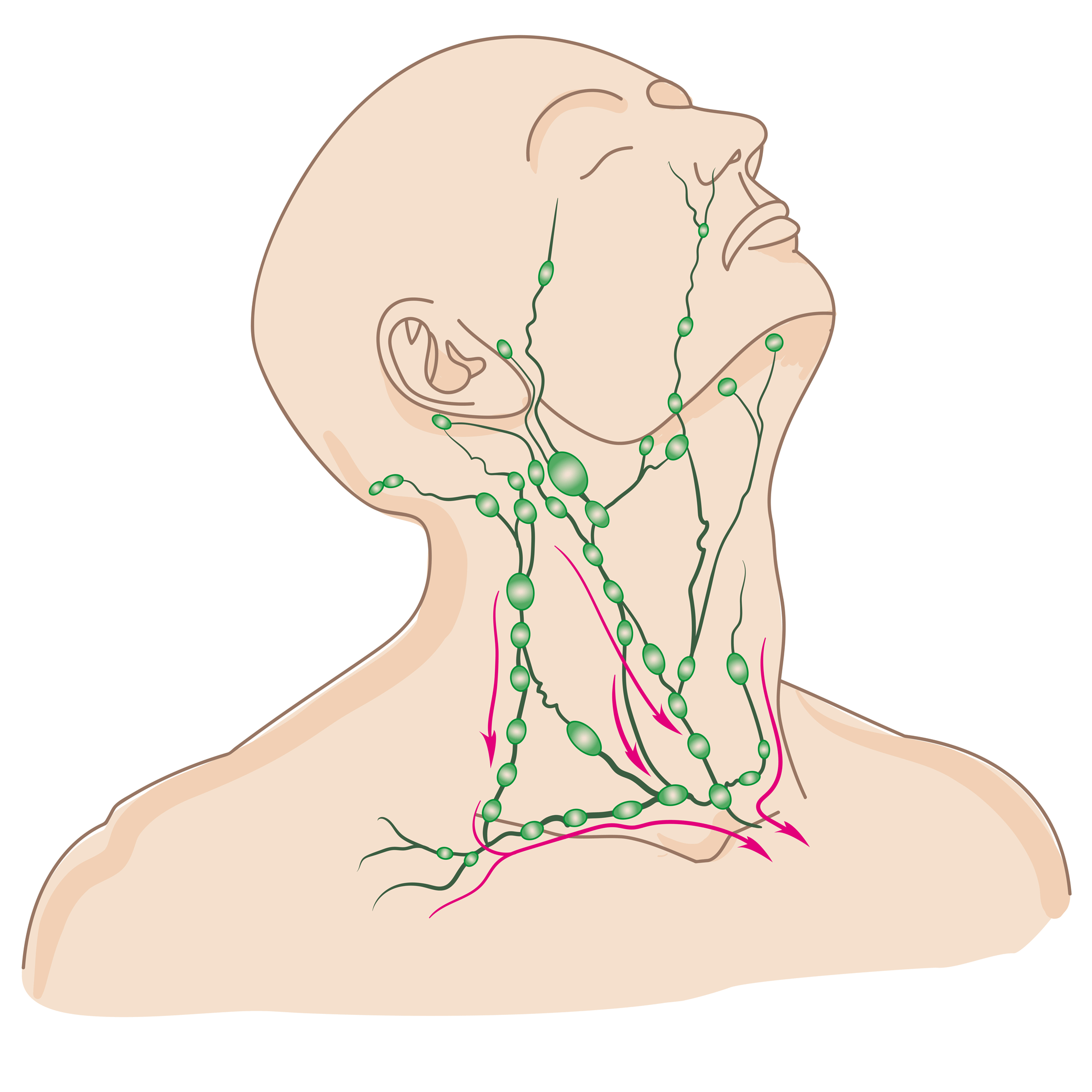Treatments: Neck Tumors or Growths
Treatment of neck tumors or growths starts with diagnosis (based on history, examination, x-rays/imaging, and diagnostic biopsy). Not all lumps or bumps of the neck require treatment, but others do. If a neck growth is found to be a cancer, knowing the specific type of cancer it represents is essential for developing the best treatment plan. For example, a cancer within a lymph node of the neck may represent spread of a cancer from a different site, which itself would need treatment. Once the diagnosis is made, we have a much better idea of how well a tumor will respond to various treatment options, such as surgery, radiation, and/or medicine (or a combination of these).
Excision of branchial cleft cyst
When a branchial cleft cyst is present, surgical excision is the standard treatment because it does not respond to other types of treatment (like medicines, radiation) and if left untreated, a branchial cleft cyst is at risk of infection, discomfort, and distortion of the neck. Each of the four different types of branchial cleft cysts has a characteristic anatomic relationship to the nerves and blood vessels of the face and neck. Surgical goals include removing the cyst entirely without injury to the related nerves and blood vessels.
Excision of thyroglossal duct cyst (“Sistrunk procedure”)
A thyroglossal duct cyst may manifest at any time, but it represents the remnant of a tunnel through which the thyroid gland migrates during embryological development from the base of the tongue down to the lower neck. On this route of migration, the thyroid tissue passes through (or very close to) an arch-shaped bone under the chin, the hyoid bone. Successful removal of the thyroglossal duct cyst is complete removal of the tunnel and any fluid sac that has developed within the tunnel, so that it not recur later. While someone with a thyroglossal duct cyst technically has this problem since birth, it usually becomes apparent in childhood or early adulthood, often because it has become infected. The infection is typically treated first and then followed shortly thereafter with surgery.
Lymph node removal (lymphadenectomy or “neck dissection”)
Often combined with other procedures or non-operative treatments, removing the neck lymph nodes is an effective treatment as well as very informative from a diagnostic standpoint, as the number of lymph nodes with cancer and identification of any adverse features present help to tailor any additional treatments, such as chemotherapy, immunotherapy, and/or radiation therapy.
External beam radiation (radiation therapy)
Radiation therapy is a type of treatment commonly used for head and neck cancer as well as some non-cancerous (benign) conditions. It may be done before or after surgery, and it has a different set of advantages and disadvantages compared to medicine and surgery.
Medical therapy (chemotherapy and immunologic therapy)
Medicines to fight cancer have improved markedly in the recent past. As with surgery and radiation, medical therapy plays an essential role in treatment of head and neck cancers. A recommendation whether to use medical therapy, which type of medical therapy, and so forth is based on the type of cancer, the stage of the cancer, and the risk/benefit ratio of medical therapy.
thyroidectomy
Removing some or all of the thyroid remains the most effective treatment for most thyroid cancers as well as some non-cancerous conditions such as a very large thyroid (goiter) or an over-active thyroid nodule that does not respond to medical therapy.
parathyroidectomy
Removing one more more parathyroids as a treatment for the overactive parathyroid is usually curative, and often results in a boost of energy and vitality in addition to other health benefits.
laryngectomy (total laryngectomy, partial laryngectomy, supraglottic laryngectomy)
Removing some or part of the voice box (larynx) is done when doing so is superior to other options, based on success of cancer treatment, swallowing, communication, lung health, and several other factors specific to the individual situation.
This page









